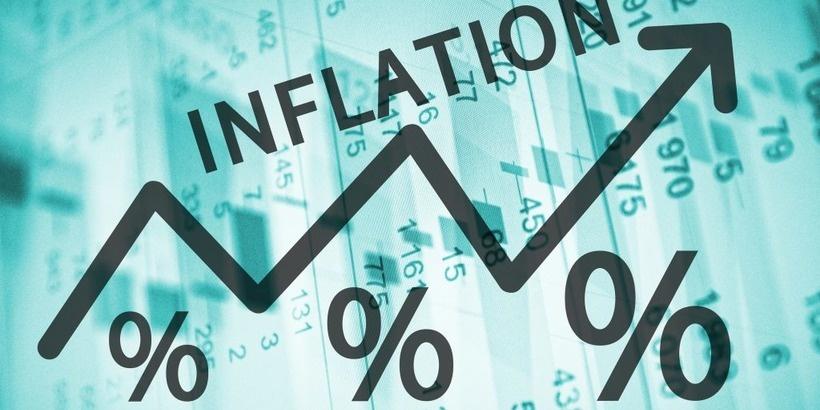Azerbaijan reduces discount rate amid downtrend in global economy Central Bank takes action
The global economy may again face a period of weak growth, with China and EU countries being most exposed to these risks. The International Monetary Fund (IMF) recently issued such a warning, where they also believe that geopolitical conflicts increase fragmentation of the world economy. These problems may lead to a decrease in global demand for raw materials, respectively, there are certain risks for Azerbaijan: in order to buy this negative and support business from the end of 2023, the country reduces the cost of borrowed capital, the regulator consistently reduces the refinancing rate. The Board of the Central Bank of Azerbaijan (CBA) took another step in this regard, reducing the discount rate from 7.5 per cent to 7.25 per cent.
Earlier this year, the World Bank's (WB) Economic Prospects 2024 report stated that the global economic growth rate will continue to slow down for the third year in a row and will drop to 2.4 per cent. The forecast for the slowdown of the global economic system was explained by the tight monetary policy of the leading central banks, which made lending conditions more difficult, as well as by the weakness of global trade and a decline in the inflow of investment. The WB specialists believe that the escalation of the conflict in the Middle East, as well as the Russian-Ukrainian war, which has been going on for the third year, increase the level of geopolitical risks, not contributing to the recovery of logistics and value chains.
The WB believes that global trade fragmentation, food shortages, climate and water problems have the greatest impact on developing countries and emerging market and developing economies (EMDEs) due to limited fiscal space and low levels of investment in poor countries. Similar conclusions followed from the UN's January World Economic Outlook report, which also noted that still-high interest rates, climate challenges and conflict are hampering the global economy's growth rate, which has yet to reach pre-pandemic levels.
Alas, but after four months of 2024, the situation in the world economy has not undergone any noticeable change for the better. "Our World Economic Outlook shows the global economy converging back to a rather weak trend rate of growth. The US economy still looks like it’s firing on all cylinders, but that is unlikely to last, well in China GDP growth prospects are clouded by the effects of last year's real estate market crisis," IMF Managing Director Kristalina Georgieva told the annual EU budget conference in Brussels, emphasizing that productivity growth in Europe is lagging behind, reflecting much lower volume investment in new technologies than in the US.
The IMF management believes that all this negativity is accompanied by a heavy burden of public debt and the processes of fragmentation of the world economy against the background of ongoing geopolitical turmoil.
Note that in mid-April, the IMF and the WB Group held their Spring Meetings in Washington, discussing the prospects for the world economy within the framework of the World Economic Outlook report. During this forum, Pierre-Olivier Gourinchas, the Economic Counsellor and the Director of Research of the IMF, noted that global inflation is expected to decline in 2024-2025: "Average inflation will fall from 4 per cent at the end of last year to 2.8 per cent by the end of this year and to 2.4 per cent by the end of 2025." A sustained decline in the inflation burden is the main condition for regulators to proceed to a more active reduction in discount rates, thereby making borrowed capital cheaper and expanding bank lending to the economy.
"Inflation trends are encouraging, but we are not yet at target, which in some countries has stalled since the beginning of the year. This may be a temporary problem, but there are reasons to remain vigilant," said the IMF department director, who emphasized that inflation remains persistently high in many countries and further trade restrictions could resume the upward trend in commodity prices.
The Central Bank of Azerbaijan closely monitors the situation in the global financial markets and the risks arising here. As in many countries across the globe, the factor of imported inflation prompted the CBA to implement conservative scenarios in monetary and credit and monetary policy in 2022-2023, gradually increasing the discount rate, which reached 9 per cent at the peak of the upswing. However, against the backdrop of the recessionary downturn in the second half of 2023, there was a downward trend in global commodity, energy and food prices, and by the end of the year the global macroeconomic situation stabilized, allowing regulators to pursue a softer monetary policy.

The Central Bank of Azerbaijan closely monitors the situation in the global financial markets and the risks arising here. As in many countries of the world, the factor of imported inflation prompted the CBA to implement conservative scenarios in monetary and credit and monetary policy in 2022-2023, gradually increasing the discount rate, which reached 9 per cent at the peak. However, against the backdrop of the recessionary downturn in the second half of 2023, there was a downward trend in global commodity, energy and food prices, and by the end of the year the global macroeconomic situation stabilized, allowing regulators to pursue a looser monetary policy.
These processes have significantly limited the impact of imported inflation on the Azerbaijani economy, and, as in many countries around the world, in 2024 Azerbaijan's priorities were refocused on improving economic dynamics, reducing the fiscal burden on businesses, and making borrowing cheaper.
Already in November-December last year, as well as at the end of January 2024, the CBA reduced the discount rate three times from 9 per cent to 7.75 per cent, positive trends were observed in February and March, allowing to reduce the discount rate to 7.5 per cent. And the day before, the CBA board made another decision to reduce the refinancing rate by 0.25 percentage points to 7.25 per cent: the upper limit of the interest rate corridor from 8.5 per cent to 8.25 per cent, while the lower limit was kept unchanged at 6.25 per cent. This decision was made taking into account the comparison of actual and forecasted inflation with the target (4±2 per cent), stabilization of inflation expectations and changes in the balance of risks.
"Given that the inflation forecast has changed downward, the reduction of the upper limit of the interest rate corridor and the discount rate is aimed at easing monetary conditions, while keeping the lower limit unchanged contributes to reducing the volatility of interbank interest rates. In determining these parameters of the interest rate corridor, the possibility of their impact on interest rates in the interbank money market was also taken into account," the CBA said in a commentary published the day before.
What is the evidence of strengthened sustainable deleveraging policy trends of the CBA? Firstly, the regulator is signaling to the local market that inflation expectations are declining: "In the current and future year, annual inflation in Azerbaijan will be within target, in particular, according to the lowered April forecasts, annual inflation is expected to be 3.5 per cent in 2024 and 4.2 per cent in 2025." In particular, in March 2024, 12-month inflation amounted to 0.4 per cent and 12-month core inflation amounted to 1 per cent.

"There have been no significant changes in the balance of inflation risk since the last meeting: geopolitical tensions, obstacles on important international trade routes, climate change, instability of commodity prices on the world market and price increases in partner countries remain the main external inflation risks," the Central Bank of Azerbaijan reports.
On the other hand, the expectation that monetary conditions in the world will remain relatively tight and central banks of the leading countries will reduce interest rates very moderately in the medium term is a factor indicating a steady decline in global inflation.
These circumstances, in fact, significantly reduce external risks for Azerbaijan, and the key internal factor of inflationary growth in the CBA identified the activation of local cost factors, as well as public spending and excessive growth of aggregate demand. However, increasing and decreasing risks of inflation balance each other, and against this background our country can more confidently reduce the level of discount rate, softening monetary policy.
This is a signal to the domestic banking sector to reduce the interest on borrowed funds. Given the forecasts of the World Bank and IMF on the decline of the global economy in 2024, Azerbaijan needs to strengthen incentive measures, increase the capitalization of local companies, increase their market activity, and this is impossible without feeding the business with low-interest and "long" money, including through banking structures. A relatively high level of liquidity has been observed in the country's credit market since last year, and the next reduction of the regulator's discount rate will contribute to the cheapening of lending interest, accelerating the sterilization of banks' excess funds.
Whether the CBA's policy of monetary policy easing will continue in the future will become clear on June 21 this year, when the next review of the interest rate corridor parameters will be held.








